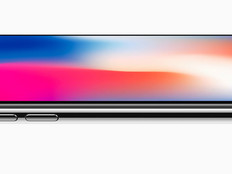WiMAX: The Future Is Now
WiMAX is an enhanced broadband standard with mobile features that promise continuous connectivity and wide coverage. With WiMAX support of multiple antennas at a single base station and sometimes at the subscriber unit, coverage can reach for miles; data throughput can increase by four to 10 times the few megabytes per second achieved by the most advanced cellular 3G technologies.
The 3rd Generation Partnership Project targeted the Universal Mobile Telecommunications System (UMTS) mobile phone standard to cope with future technology evolution and suggested a competing standard to WiMAX, called Long Term Evolution (LTE). Both LTE and WiMAX can be seen as 4G (some say pre-4G) technologies. The technological differences between them are few, so they both work on the same bandwidth and both offer solutions to the increasing demand for enhanced broadband services.
Because Wi-Fi is already widely deployed and works effectively indoors, WiMAX is expected initially to co-exist with Wi-Fi (connecting to and between Wi-Fi hotspots) and to be used in areas where it is more effective than Wi-Fi. WiMAX, as a broadband wireless technology, can also be used as an alternative to cable and DSL as a “last mile” broadband access, mainly in rural areas where there is no wired infrastructure.
Business WiMAX
WiMAX technology can cost-effectively meet the requirements of small and medium size businesses in less-populated areas, where it can operate over long distances and supply high bandwidth at reduced costs, compared with existing wired solutions. In urban areas it can offer higher bandwidth than the cable and DSL technology used in many small and medium size businesses and can also help reduce infrastructure costs for service providers, resulting in lower operational costs for the businesses themselves.
Businesses that have high upload demands might find WiMAX particularly appealing. Today, many smaller businesses are relying on high-end consumer services instead of expensive business options. While consumers are primarily downloading information, in the business sector a considerable amount of data flows the other way. Fast upload times can make a remarkable difference to small businesses, specifically in voice, video and security applications, offsite data backup, e-commerce, FTP transfers and virtual private networks.
WiMAX has the potential to change both the consumer and business landscape, allowing more users to utilize faster online services at lower prices.
How WiMAX Works
The WiMAX network uses an approach that is similar to that of cell phones. A user sends data from a subscriber device to a base station mounted on a tower or tall building that broadcasts the wireless signal in a channel called an uplink; the base station transmits to either the same or another user in a channel called a downlink. Unlike users, who traditionally have limited resources — limited transmission power and computation capabilities and a limited number of antennas — the base station can use greater transmission power, more antennas and enhanced computation algorithms.
WiMAX service providers deploy a network of towers that deliver access over many miles, with broadband service available anywhere within the coverage area. Coverage in a geographical region is divided into a series of overlapping areas called cells. When the user travels from one area to another, the wireless connection is transferred from one cell to another, providing continuous coverage.
WiMAX Today
Broadband is becoming a necessity for many residential and business subscribers worldwide. There were close to 350 million broadband subscribers worldwide at the end of 2007, up from 130 million at the end of 2004, and WiMAX as a leading broadband technology is starting to create a niche in this market.
At the end of 2007, there were 1.65 million WiMAX subscribers; right now there is an estimated 1.9 million, according to the WiMAX Maravedis Telecom research company. Just over half are using WiMAX Certified technology, which guarantees that different companies’ products and services based on the WiMAX standard are compatible; 64 percent of customers are residential and 36 percent are businesses, and WiMAX providers are competing aggressively with DSL in urban and suburban areas.
The WiMAX Forum — a trade association for WiMAX operators — certified more than 100 mobile products across all profiles by the end of 2008; that number is expected to hit more than 1,000 by the end of 2011. Market research firm IDC expects the WiMAX infrastructure equipment market to grow from $939 million in 2006 to more than $3.5 billion in 2011; the WiMAX silicon market is expected to grow from $34 million in 2006 to more than $1 billion in 2011.
With more than 262 WiMAX operators in 91 countries, the technology plays an important role in both emerging markets and mature markets. Many companies, from large communications equipment companies to small manufacturers, are developing and manufacturing WiMAX.
Intel, Google, Comcast, Time Warner Cable and Bright House Networks recently joined forces to form a new venture, to be called Clearwire, to establish a nationwide WiMAX network. This venture gives WiMAX a better footing as a next-generation 4G wireless network. Sprint adopted WiMAX as its next generation broadband service (although recently there have been signs that this might change to LTE).
After a very bumpy beginning, Sprint agreed to combine XOHM (Sprint’s 4G business unit) and Clearwire. Last August, with the rollout of WiMAX service in Baltimore, XOHM, Intel and WiMAX partners celebrated a new 4G broadband era. Next on the list: Chicago and Washington, D.C.
XOHM USB WiMAX dongles by ZTE are now available, and Nokia will introduce the new pocket size Nokia N810 Internet tablet WiMAX edition, complete with a widescreen display and small keyboard, at select independent retailers in Baltimore. WiMAX-enabled notebooks will be available in the United States for Sprint and Clearwire networks later in 2009.
Verizon and Vodafone (the joint owners of Verizon Wireless) plan to develop and deploy LTE, the competing technology, as their fourth generation mobile broadband network. Both WiMAX and LTE have much in common in both technology and architecture. Still, WiMAX offers certain advantages: It benefits from strong alliances, including Intel and Google, and network operators are the largest segment of the WiMAX Forum. People also might prefer to use WiMAX as the next generation of free Wi-Fi. WiMAX has already started regional and nationwide deployments while LTE will not enter the market until late 2009 (at the earliest). According to Nokia and Ericsson, their primary market — 3G operators — will be unlikely to adopt LTE until a few years later.
LTE operator AT&T reiterated its position that its 3.5 High Speed Packet Access and 3G network technologies still have a lot of life left in them, and that LTE technology will not be rolled out for at least another three years. The WiMAX Forum has already started working on the next backward-compatible generation of the WiMAX standard, the 802.16m, which will be able to use even higher bandwidths and achieve higher spectral efficiency, making it competitive with 802.11n.
Recently, there are signs that WiMAX and LTE operators are seeking a negotiated settlement to harmonize their technologies. Participants from both the WiMAX and LTE camps and standards organizations have recognized the need to collaborate on developing communications.
The long-term trends in technology, regulation, ecosystem consolidation and globalization contribute to the rationale that wireless systems should strive to achieve common air interfaces where feasible. Intel CEO Paul Otellini has also called for harmonization between WiMAX and LTE, pointing out the goals of unified broadband communications and common use of technologies.
A head-to-head battle over the next few years would require an outlay of billions of dollars in equipment deployment, which would be unnecessary if the standards are harmonized. The primary obstacle to achieving harmony between WiMAX and LTE is simply the commercial self-interest of competing companies and manufacturers. Intel will eventually provide combined support regardless of whether the standards groups achieve agreement on providing a multi-mode WiMAX plus LTE chip set for notebooks.
Infonetics Research, the premier international market research and consulting firm specializing in data networking and telecom, believes that consumers will adopt dual-mode (Wi-Fi and WiMAX) notepads and phones for use with home wireless networks, public hot spots and municipal networks. Intel and Nokia are developing technology that is supposed to provide true uninterrupted broadband connectivity based on automatic undetectable switchovers from Wi-Fi to WiMAX.
Whether through LTE or WiMAX, the success of mobile broadband will be driven by the development of user-friendly applications and handsets. Applications driving the mobile broadband market include mobile music, multimedia messaging, gaming and mobile TV.
Iddo Genuth is the editor of the electronic magazine The Future of Things at www.thefutureofthings.com.







